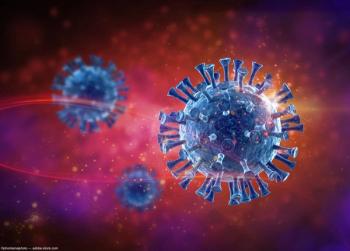
- Ophthalmology Times: November 15, 2020
- Volume 45
- Issue 19
Neuro-ophthalmology, NFL connect for a touchdown
Science is being tapped by professional sports league to train and develop officials.
Special to Ophthalmology Times®
The
No part of life has been immune to the effects of the pandemic, including American professional football.
Prior to the pandemic, innovative work was being done in the world of National Football League (NFL) refereeing; training NFL referees was changing to make the job more precise and objective.
Imagine my surprise when Walt Anderson, MD, a 24-year NFL officiating veteran, called me to talk about neuro-ophthalmology for the NFL. Anderson has been tasked with training and developing a new breed of NFL game officials.
Related:
The focus in his role as the league’s senior vice president of Officiating Training and Development is on education, and one of his goals is to bring the science of neuro-ophthalmology and the scientific method to the officiating role.
We all know the tired jokes about “blind” referees missing an infraction and offers for “free eye exams” after perceived errors. The truth is, however, that visual acuity probably has nothing to do with a blown officiating call on the field.
Enter neuro-ophthalmology
Anderson’s referee training approach includes real-world experience with astute scientific analysis combined with the power of careful slow-motion, repeated viewings of video replays. The process breaks down the mechanics of NFL officiating play by play.
So, what does this have to do with neuro-ophthalmology? In terms of the mechanics of the game for players, coaches, and more specifically, referees, football is an “on the field” opportunity to see both afferent and efferent neuro-ophthalmology in the real-world setting.
Amazingly, many of the details of the anatomy and mechanics of vision, visual field, saccades, pursuit, and the vestibulo-ocular reflex (VOR) have direct implications for the game.
As a retired dentist, Anderson has a unique insight in to both the world of medicine/dentistry and the world of NFL football.
Related:
For example, the VOR—which acts to stabilize foveation during head or body motion—can degrade a referee’s ability to make the call on the run during a live-action play. Likewise, the visual field can make the difference between seeing a foul and missing the call.
Some of these scientific principles that are well known and intuitive to ophthalmologists are not as obvious to laypersons.
Experienced NFL referees know intuitively that they often have to move back from the snap when a play starts to increase their field of view to other aspects of the play that are known to evolve in a specific sequence.
They know to remain still after gaining line of sight on the play to reduce motion artifact from the VOR, and they know that running full tilt with a running back may not be the best way to maintain eyes on the ball.
Neuro-ophthalmic science provides the anatomy, physiology, and mechanics of vision and eye movement that pairs with the existing knowledge on play calling from years of NFL experience. The “know how” for the mechanics of football can be aligned with knowledge about neuro-ophthalmic systems.
Related:
For me, it has been an exciting and fascinating journey to go on the virtual field with Anderson and to learn the lingo and jargon of NFL referees. Likewise, for Anderson and his colleagues, they get a mini-medical school rotation to learn the jargon of neuro-ophthalmology and to put academic and scientific names on their referee experience and their advice on and off the field to NFL referees.
Maximizing visual field, minimizing foveal drift, improving saccadic search strategies, minimizing VOR degradation of foveation time, and maximizing binocular pursuit options in real time have made for fascinating and intriguing discussions between neuro-ophthalmology and the NFL referees.
As the pandemic continues to bring change and innovation to the game on the field, neuro-ophthalmology looks forward to continued work with Anderson and the NFL for improving the science of NFL officiating.
Moreover, experience and expertise matter just as much for referees on the playing field as for clinicians in the neuro-ophthalmic clinic.
About the author
Andrew G. Lee, MD
p: 713-441-8843
e:[email protected]
Lee is affiliated with the Blanton Eye Institute at Houston Methodist Hospital in Texas. He has no financial disclosures related to this content.
Articles in this issue
almost 5 years ago
Evaluating scleral biomechanics to pinpoint root of accommodationabout 5 years ago
FA implant outperforms anti-VEGF in DR patients lost to follow-upabout 5 years ago
Challenges to topical drop adherence after cataract surgeryabout 5 years ago
Gene therapy surgical pearls for successful outcomesabout 5 years ago
Eliminating preop fasting leads to happier cataract patientsabout 5 years ago
Pearls for drawing patients back to your practiceabout 5 years ago
Haptic flanging reduces IOL dislocations after cataract surgeryabout 5 years ago
AMA steps up support for gender equity in medicineabout 5 years ago
Ophthalmic practices eye private equity investorsabout 5 years ago
Oh, the people we meetNewsletter
Don’t miss out—get Ophthalmology Times updates on the latest clinical advancements and expert interviews, straight to your inbox.













































